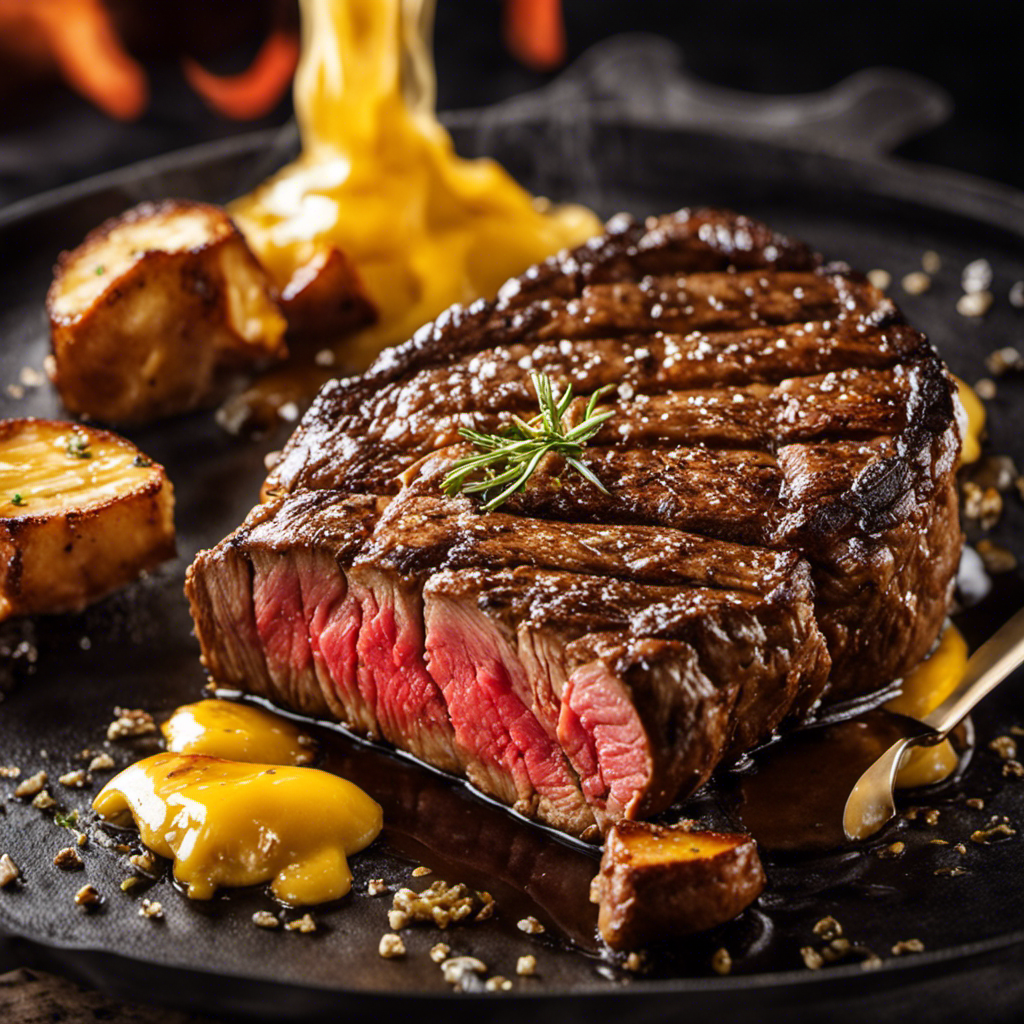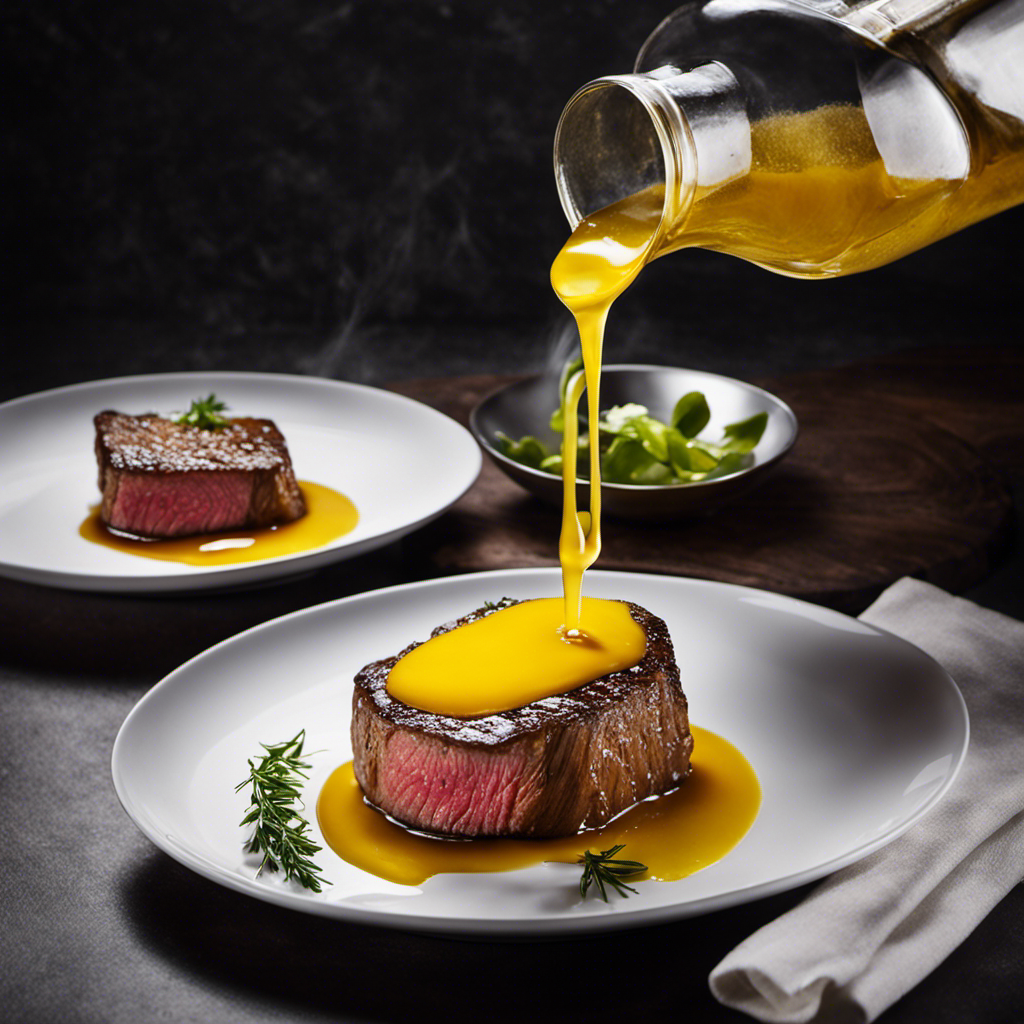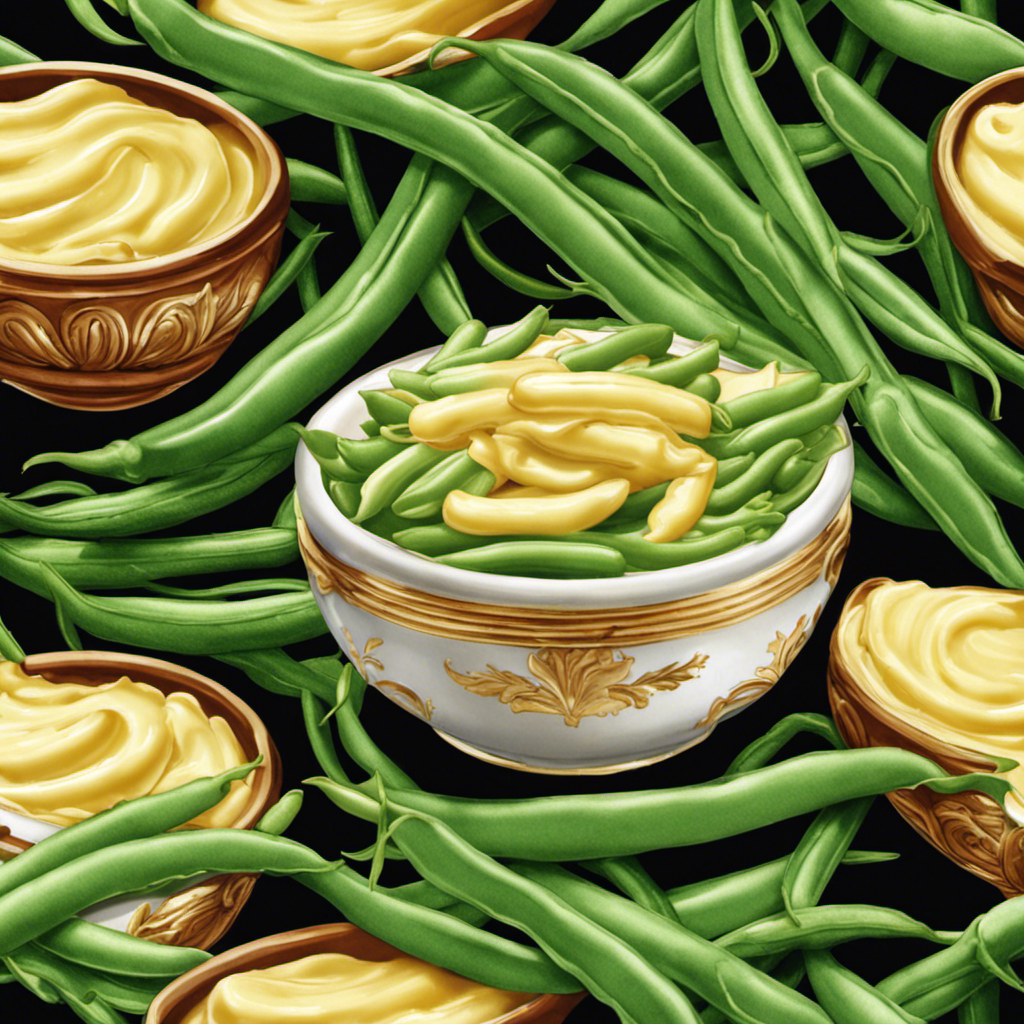Are you curious to know if there’s anything better than a plate of succulent garlic butter shrimp? Let me tell you, the perfect pairing can take this dish to a whole new level of culinary excellence.
In this article, I’ll share some mouthwatering ideas for what to serve with garlic butter shrimp. From fresh salads bursting with flavor to tantalizing pasta recipes and tasty vegetable options, we’ve got you covered.
And let’s not forget about the delectable bread and rice choices that will complete your meal.
So, let’s dive in and discover the perfect accompaniments for your next garlic butter shrimp feast.
Key Takeaways
- Seafood and potato options such as classic shrimp cocktail, grilled asparagus, crispy roasted potatoes, and loaded mashed potatoes can elevate the garlic butter shrimp dish.
- Fresh salads like watermelon and feta salad, strawberry spinach salad, and Greek salad can provide a light and refreshing balance to the indulgent shrimp.
- Mouthwatering pasta recipes like creamy garlic Parmesan pasta, lemon butter pasta, spicy Cajun shrimp pasta, pesto pasta with shrimp, and tomato and garlic linguine can be delicious accompaniments to garlic butter shrimp.
- Tasty vegetable options like crispy roasted potatoes, grilled asparagus, sautéed spinach, and a well-balanced meal with vegetables can complement the flavors and textures of garlic butter shrimp.
Delicious Side Dishes for Garlic Butter Shrimp
Looking for some tasty sides to go with your garlic butter shrimp? Well, you’re in luck because I have some scrumptious seafood options and savory potato dishes that will perfectly complement your main course.
When it comes to seafood, you can’t go wrong with a classic shrimp cocktail. The tangy cocktail sauce and fresh shrimp are a match made in heaven.
Another great option is grilled asparagus. The smoky flavor pairs beautifully with the rich garlic butter shrimp.
If you’re a fan of potatoes, consider making some crispy roasted potatoes. Tossed in olive oil and seasoned with herbs, these potatoes will add a delicious crunch to your meal.
For a more indulgent option, try making loaded mashed potatoes. Creamy, cheesy, and loaded with bacon and chives, they are the ultimate comfort food.
Whether you choose a seafood side or a potato dish, these options will elevate your garlic butter shrimp to a whole new level of deliciousness.
Fresh Salad Ideas to Pair With Garlic Butter Shrimp
Don’t forget to toss in some fresh greens and crunchy veggies to complement your flavorful garlic butter shrimp. Light and refreshing summer salads make the perfect accompaniment to this indulgent dish. They provide a balance of flavors and textures, while also adding a healthy element to your meal.
Here are three ideas to inspire your salad creations:
-
Watermelon and Feta Salad: This combination of juicy watermelon, tangy feta cheese, and crisp cucumber is a winning combination. Drizzle with a simple balsamic vinaigrette for a burst of flavor.
-
Strawberry Spinach Salad: The sweetness of fresh strawberries pairs perfectly with the earthiness of spinach. Top it off with some toasted almonds and a zesty poppy seed dressing for a delightful summer treat.
-
Greek Salad: For a Mediterranean twist, combine cucumbers, tomatoes, red onions, olives, and feta cheese. Toss with a lemon-herb dressing for a burst of freshness.
These light and refreshing summer salads, paired with creative and flavorful salad dressings, will elevate your garlic butter shrimp to a whole new level. Enjoy!
Mouthwatering Pasta Recipes to Accompany Garlic Butter Shrimp
If you’re in the mood for a hearty meal, try these mouthwatering pasta recipes that pair perfectly with the flavorful garlic butter shrimp. Whether you’re craving a creamy Alfredo or a tangy lemon butter sauce, these pasta dishes will satisfy your taste buds and leave you wanting more.
To make it easier for you to choose, here’s a helpful table showcasing five delicious pasta recipes that complement garlic butter shrimp:
| Pasta Recipe | Description |
|---|---|
| Creamy Garlic Parmesan Pasta | A rich and indulgent dish with a velvety Alfredo sauce, topped with grated Parmesan cheese. |
| Lemon Butter Pasta | Light and refreshing, this pasta is tossed in a zesty lemon butter sauce, perfect for balancing the richness of the shrimp. |
| Spicy Cajun Shrimp Pasta | For those who crave a little heat, this pasta is tossed in a fiery Cajun sauce, complementing the garlic butter shrimp perfectly. |
| Pesto Pasta with Shrimp | This vibrant pasta dish features a fragrant basil pesto sauce, adding a burst of freshness to the garlic butter shrimp. |
| Tomato and Garlic Linguine | Simple yet flavorful, this pasta is tossed in a garlic-infused tomato sauce, enhancing the taste of the garlic butter shrimp. |
These pasta recipes offer a variety of flavors and textures that enhance the deliciousness of the garlic butter shrimp. Whether you prefer a creamy and indulgent dish or a light and tangy option, you can’t go wrong with these mouthwatering combinations. So go ahead, indulge in a satisfying meal that combines the best of both worlds: pasta and garlic butter shrimp.
Tasty Vegetable Options to Serve With Garlic Butter Shrimp
When you’re in the mood for a well-rounded meal, consider these tasty vegetable options that pair perfectly with your flavorful shrimp dish. To enhance the flavors and textures of your garlic butter shrimp, try serving them with the following vegetable accompaniments:
-
Roasted Potatoes: Crispy on the outside and fluffy on the inside, roasted potatoes provide a satisfying and hearty complement to the succulent shrimp. Seasoned with herbs and spices, they add a delightful depth of flavor to your meal.
-
Grilled Asparagus: Grilling brings out the natural sweetness of asparagus while adding a smoky charred taste. The tender-crisp texture of grilled asparagus provides a refreshing contrast to the rich and buttery shrimp.
-
Sautéed Spinach: Lightly sautéed spinach makes for a nutritious and vibrant addition to your plate. Its earthy flavors and tender leaves create a perfect balance with the garlicky shrimp.
These vegetable options not only provide a burst of freshness but also contribute to a well-balanced and satisfying meal.
Now, let’s explore some delectable bread and rice choices to enjoy with garlic butter shrimp.
Delectable Bread and Rice Choices to Enjoy With Garlic Butter Shrimp
To truly savor the flavors of garlic butter shrimp, you can’t go wrong with a warm slice of crusty bread or a side of fluffy rice. These options perfectly complement the rich and savory taste of the shrimp, creating a satisfying and delicious meal. However, if you’re looking for more variety, there are other delectable choices to consider. Savory potato dishes are a great option to pair with garlic butter shrimp. Whether it’s crispy roasted potatoes, creamy mashed potatoes, or even cheesy potato gratin, the combination of the garlic butter shrimp and the potatoes is simply irresistible. Another delightful option is crispy and flavorful vegetable fritters. These fritters, made with a variety of vegetables like zucchini, corn, or cauliflower, provide a satisfying crunch and add an extra layer of texture to your meal. Here is a table showcasing some delicious side dish options to enjoy with garlic butter shrimp:
| Savory Potato Dishes | Vegetable Fritters |
|---|---|
| Roasted Potatoes | Zucchini Fritters |
| Mashed Potatoes | Corn Fritters |
| Potato Gratin | Cauliflower Fritters |
| Potato Wedges | Spinach Fritters |
These side dishes not only enhance the flavors of the garlic butter shrimp but also add variety and depth to your meal. Whether you choose a classic potato dish or opt for crispy vegetable fritters, you’re sure to have a satisfying and memorable dining experience.
Frequently Asked Questions
How Do You Make Garlic Butter Shrimp?
Making garlic butter shrimp is simple and delicious. Start by sautéing fresh shrimp in a mixture of melted butter and minced garlic. Add a squeeze of lemon juice and sprinkle of parsley to enhance the flavor. Enjoy!
Can I Use Frozen Shrimp for This Recipe?
Sure, you can use frozen shrimp for this recipe. Thaw them first, then follow the cooking methods mentioned. The frozen shrimp will still taste delicious when cooked with the flavorful garlic butter.
What Kind of Salad Dressing Goes Well With Garlic Butter Shrimp?
When it comes to serving garlic butter shrimp, there are several salad dressing options that pair well. Alongside this delicious dish, I also recommend considering some of the best side dishes available.
Are There Any Gluten-Free Pasta Options to Pair With Garlic Butter Shrimp?
There are plenty of gluten-free pasta options available that would pair well with garlic butter shrimp. In addition, there are also alternative side dishes that would complement the dish nicely.
Can I Substitute the Suggested Vegetables With My Own Preferences?
Yes, you can definitely substitute the suggested vegetables with your own preferences. Personalizing your dish allows you to cater to your taste and create a unique flavor profile that suits you.
Conclusion
In conclusion, serving garlic butter shrimp doesn’t have to be a plain affair. By pairing it with the right side dishes, you can elevate this dish to a whole new level.
From fresh salads bursting with flavors to mouthwatering pasta recipes that will leave you craving for more, there are endless options to choose from.
Don’t forget to try out tasty vegetable options and delectable bread and rice choices to complete your meal. With these accompaniments, your garlic butter shrimp will truly shine like a star in the culinary sky, leaving your taste buds dancing with joy.










